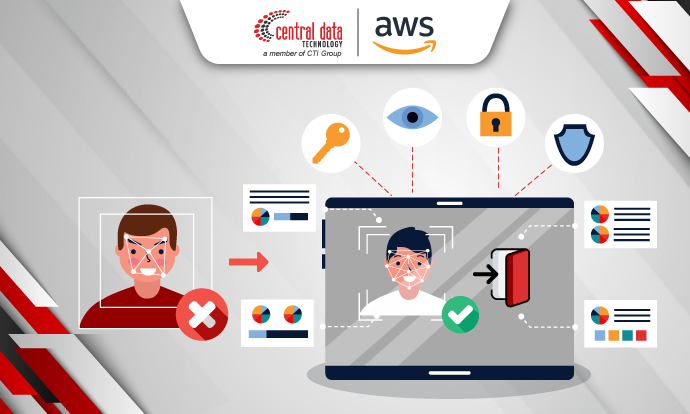
Something as cardinal as access control or managing access rights for employees in the 21st-century digital workplace cannot be overemphasized. It is prudent to note that Identity and Access Management (IAM) solutions can go a long way in assisting companies to regulate access and identities of their digital formats securely and effectively in their IT settings. IAM guarantees that only users who are permitted access to such vital information and systems are given the access they require, thereby controlling security threats while enhancing operational excellence.
But how does IAM work? And how can it protect your company’s security? Find the answer to that question in this article.
What is Identity and Access Management (IAM)?
Identity and Access Management (IAM) is a technology framework used to manage digital identities and control access to a company’s information resources. IAM provides the means for specific personnel to receive appropriate access at certain times, typically through authentication and authorization.
How Does Identity and Access Management (IAM) Works?

Understanding the inner workings of IAM can provide clarity on its importance. Essentially, IAM operates through two main steps: authentication and authorization.
Authentication
In this step, IAM confirms that users, software, or hardware are authorized entities. This is done by verifying user credentials against an identity database that is continually updated. IAM technology offers higher security compared to traditional methods such as usernames and passwords. Additionally, many companies implement multi-factor authentication (MFA) to add an extra layer of security.
Authorization
After a user’s identity is verified, the next step is to determine the appropriate level of access. IAM technology uses role-based access control (RBAC) to ensure the user only gets access relevant to their position. This helps curb unnecessary access and safeguard sensitive information.
How Importance is Identity and Access Management (IAM) for Companies?
IAM is crucial within companies as it promotes secure and appropriate access to sensitive data. IAM helps minimize the likelihood of data loss, increases compliance with legal requirements, and enhances organizational efficiency by granting the right personnel access to data.
Furthermore, IAM assists companies in addressing challenges and embracing changes, such as role changes and new projects, by providing continual and adaptable management of identities and access. To summarize, this flexibility is crucial for preserving safety and productivity in a constantly changing environment.
6 Key Benefits of Identity and Access Management (IAM) systems

Implementing IAM brings significant benefits to organizations, enhancing both security and operational efficiency.
1. Ensuring Appropriate Access
With RBAC, IAM ensures that only authorized individuals have access to the information they need, reducing the risk of unauthorized access.
2. Boosting Productivity
IAM enhances productivity with tools like single sign-on (SSO), allowing secure and easy access to various systems without repeated logins.
3. Preventing Data Breaches
IAM reduces the risk of data breaches with technologies like MFA, adding extra security layers.
4. Protecting Data through Encryption
Many IAM systems offer encryption tools to protect data during transmission, ensuring that data remains secure even in the event of a breach.
5. Reducing IT Workload
IAM automates IT tasks such as password resets and access monitoring, allowing IT teams to focus on strategic tasks.
6. Enhancing Collaboration and Efficiency
IAM facilitates secure and efficient collaboration among employees, vendors, and contractors with role-based access management.
IAM Use Case in Business

Here are some practical applications of IAM in business environments that illustrate its versatility and importance.
Detailed Permissions with Attribute-Based Access Control
Implement detailed permissions and scale with attribute-based access control for users based on department, job role, and team name. This ensures that access permissions are precisely aligned with user roles and responsibilities.
Multi-Account Access Management
Manage identities per account with IAM or use IAM Identity Center to provide multi-account access and application assignments across AWS. This centralizes access management and enhances security across multiple accounts.
Creating Permission Boundaries
Use service control policies to create permission boundaries for IAM users and roles, and implement data perimeters around your AWS accounts. This helps in enforcing strict access controls and protecting sensitive data.
Simplifying Permission Management
Simplify permission management and use cross-account findings when setting, verifying, and refining policies. This ensures that users have only the permissions they need, minimizing security risks.
Given the critical role IAM plays in securing and managing access to sensitive data, companies should consider implementing a robust IAM solution. One such top solution is AWS IAM. AWS offers IAM solutions that not only meet compliance and data security needs but also optimize operational and data security.
AWS Identity and Access Management Solutions
AWS IAM enables secure and efficient identity and access management across your IT environment. It offers robust security features like MFA and data encryption to protect sensitive information and ensure only authorized individuals have access to necessary resources. AWS IAM streamlines access management to reduce administrative overhead and supports dynamic scaling to meet the needs of growing companies.
AWS Identity Access and Management Features and Specifications
IAM Access Analyzer
Identifies resources shared with external entities and verifies policies against AWS security best practices.
IAM Identity Center
Provides centralized access to AWS accounts and cloud applications, supporting MFA and identity federation.
IAM Roles Anywhere
Allows applications outside of AWS to obtain temporary credentials managed by IAM roles. This feature supports on-premises applications needing temporary AWS access, extending AWS IAM capabilities beyond the AWS environment.
Managed IAM Permissions
Simplifies permission management with AWS managed policies that provide role-based access. These policies are tailored for specific job roles, facilitating efficient permission management with predefined policies customizable to meet specific company needs.
Managed IAM Roles
Facilitates the deployment of permissions for various use cases, including cross-account access and AWS service integrations.
Multi-Factor Authentication (MFA)
Adds an additional layer of security by requiring identity verification through alternative authentication methods. It supports various MFA methods, including hardware tokens, mobile authenticator apps, and SMS-based verification, enhancing security by requiring users to verify their identity through a secondary method.
Get AWS Identity and Access Management Solutions Only at CDT
Enhance your data security and operational efficiency with AWS Identity and Access Management solutions through Central Data Technology (CDT). As an AWS Advanced Consulting Partner in Indonesia, CDT ensures a smooth implementation process from initial consultation to after-sale support. Contact us now to learn more about how we can help secure your business data effectively.
Author: Danurdhara Suluh Prasasta
Content Writer Intern CTI Group

